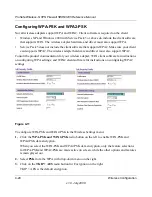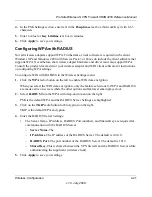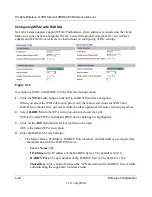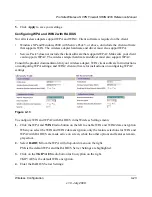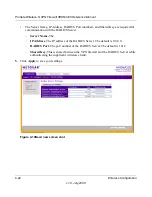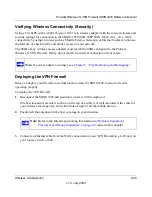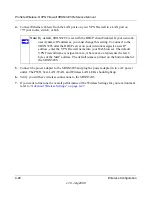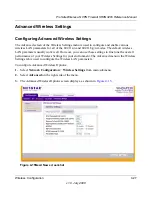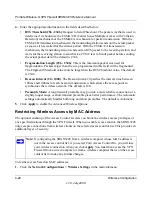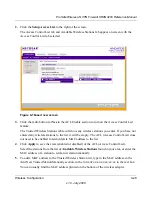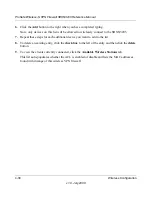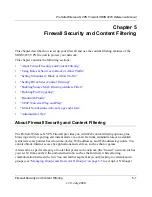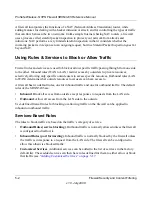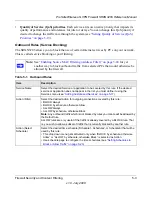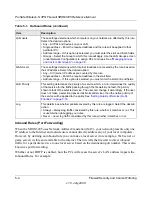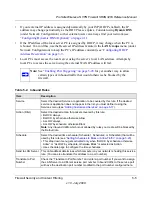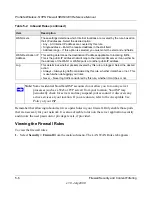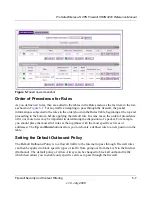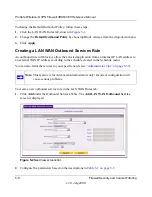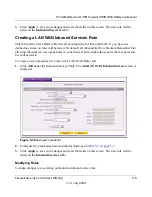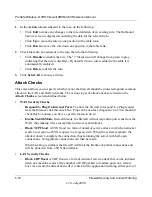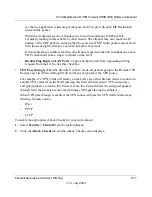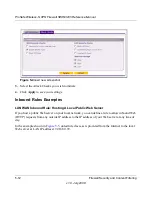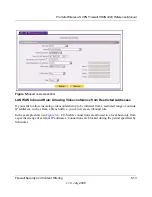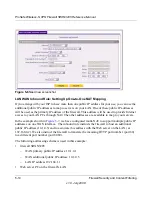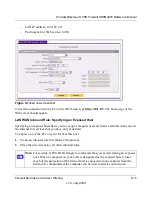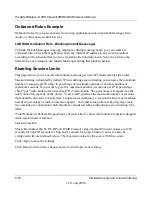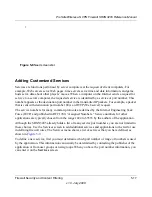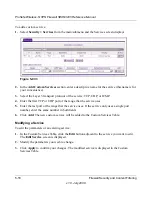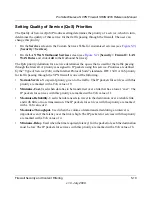
ProSafe Wireless-N VPN Firewall SRXN3205 Reference Manual
5-4
Firewall Security and Content Filtering
v1.0, July 2008
Inbound Rules (Port Forwarding)
When the SRXN3205 uses Network Address Translation (NAT), your network presents only one
IP address to the Internet and outside users cannot directly address any of your local computers.
However, by defining an inbound rule you can make a local server (for example, a Web server or
game server) visible and available to the Internet. The rule tells the firewall to direct inbound
traffic for a particular service to one local server based on the destination port number. This is also
known as port forwarding.
Whether or not DHCP is enabled, how the PCs will access the server’s LAN address impacts the
Inbound Rules. For example:
LAN users
These settings determine which computers on your network are affected by this rule.
Select the desired options:
• Any – All PCs and devices on your LAN.
• Single address – Enter the required address and the rule will be applied to that
particular PC.
• Address range – If this option is selected, you must enter the start and finish fields.
• Groups – Select the Group to which this rule will apply. Use the LAN Groups screen
(under Network Configuration) to assign PCs to Groups. See
“Managing Groups
and Hosts (LAN Groups)” on page 3-5
.
WAN Users
These settings determine which Internet locations are covered by the rule, based on
their IP address. Select the desired option:
• Any – All Internet IP address are covered by this rule.
• Single address – Enter the required address in the start field.
• Address range – If this option is selected, you must enter the start and end fields.
QoS Priority
This setting determines the priority of a service which, in turn, determines the quality
of that service for the traffic passing through the firewall. By default, the priority
shown is that of the selected service. The user can change it accordingly. If the user
does not make a selection (leaves it as Normal-Service), then the native priority of
the service will be applied to the policy. See
“Setting Quality of Service (QoS)
Priorities” on page 5-19
.
Log
This determines whether packets covered by this rule are logged. Select the desired
action:
• Always – always log traffic considered by this rule, whether it matches or not. This
is useful when debugging your rules.
• Never – never log traffic considered by this rule, whether it matches or not.
Table 5-1. Outbound Rules (continued)
Item
Description

